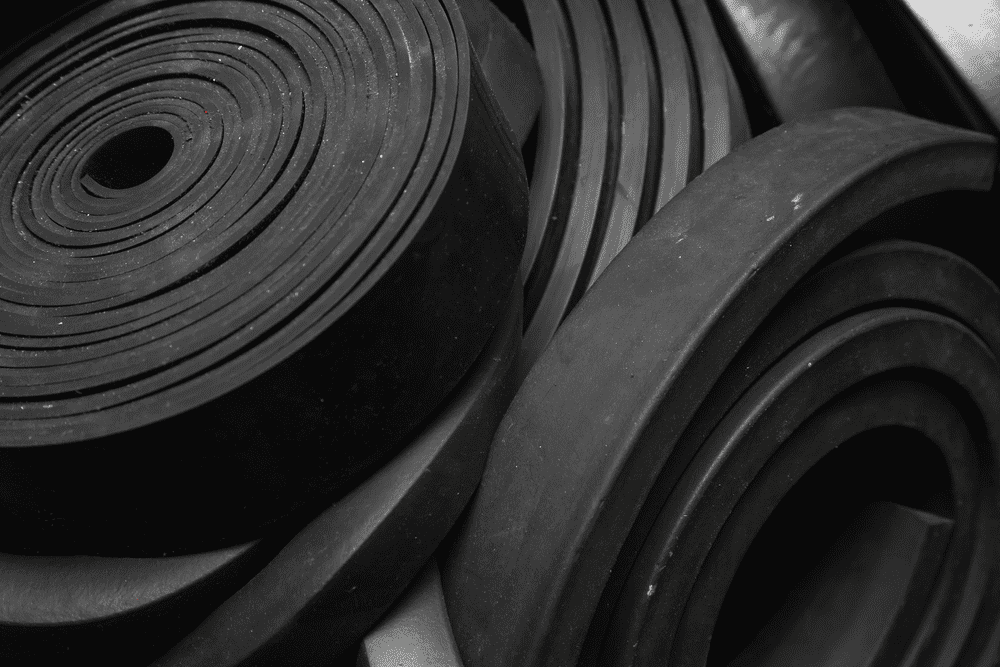Rubber provides a nearly endless set of possibilities for the design and manufacture of engineered products. It serves many sectors, including the medical field, food and beverage, transportation from automobiles to space flight, and buildings and bridges. One of the most common uses of rubber in engineering design is for seals. The selection of the base material (elastomer) and other additives, such as fillers, plasticizers, and vulcanizing agents, is a critical aspect of engineering design regardless of the specific engineering field.
Below is a brief guide to seal materials used in different engineering designs.
Key Terms of Rubber Products in Engineering Design
One of the most important aspects of rubber is that engineers can specify different formulations depending on the desired characteristics. The following are some key considerations in rubber recipes.
- Vulcanizing agents are curing agents that complete the crosslinking of the polymeric chains of the base polymer. The vulcanizing agent selected will enhance physical properties and makes the compound more resistant to deterioration.
- Compression set occurs when the material can no longer return to its original shape when the force is removed.
- Selection of fillers to support physical properties such as reaction to temperature extremes such as hardening, becoming more flexible or liquifying, or experiencing compression set.
- Chemical properties include resistance to deterioration or permeability to chemicals.
Common Rubber Materials in Engineering
Butyl
Butyl is a commonly used rubber in engineering applications that require an air-tight seal due to its low permeability to gases. It demonstrates good resistance to ozone and sunlight aging. Butyl has a Shore A hardness of 40-80. It is often used for agricultural chemicals, tire inner tubes, limited applications in the pharmaceutical industry for stoppers and septums, and other applications. It is a good choice for seals in hydraulic systems using synthetic fluids due to being only slightly affected by oxygenated solvents and other polar liquids. Butyl is not appropriate for applications that come in contact with hydrocarbon-based solvents and diester-based lubricants.
Epichlorohydrin
Epichlorohydrin functions well in relatively high temperatures, making it ideal for the petroleum industry and for fuel and air conditioning system components. It has a Shore A hardness of 50-90 with excellent resistance to hydrocarbon oils and fuels, making it a common replacement material for butyl when oil resistance and/or lower gas permeability is needed.
Epichlorhydrin has lower compression set at its upper-temperature range and degrades in the presence of ketones, esters, aldehydes, and chlorinated and nitro hydrocarbons. It also does not perform well when exposed to brake fluids.
Fluorocarbon
Fluorocarbon-based compounds, under the trademarked name Viton, are the ideal universal o-ring material due to their high temperature and superior chemical resistance. The upper range for fluorocarbon-based compounds is +446oF with a Shore A hardness of 45-90. It is ideal for seals in automotive and aircraft engines and fuel handling systems due to its high chemical resistance, including high octane and oxygenated fuel blends. Variations in recipes can improve performance in various chemical exposures and temperatures, including at low temperatures.
Fluorosilicone
Fluorsilicone is the seal material of choice for the aerospace industry for fuel and/or diester-based lubricant systems with very high-temperature resistance of up to 400oF. Fluorosilicone is increasingly becoming popular in engineering applications due to its excellent fuel resistance and high-temperature stability. It is also suitable for conditions with exposure to air, sunlight, ozone, and chlorinated and aromatic hydrocarbons.
This material performs well in static sealing conditions, but its limited physical strength, poor abrasion resistance, and high friction characteristics make it less suitable for dynamic sealing conditions. Unless specially formulated, fluorosilicone is not recommended for conditions with exposure to brake fluids, hydrazine, or ketones.
Selecting Rubber Products in Engineering Design
Selecting a rubber o-ring is not as simple as heading to the hardware store. As this article shows, engineers need to understand the environmental conditions a rubber product needs to perform and select the right base material and formulation to meet the ultimate purpose of the product, from a medical device to a refrigerator seal.
